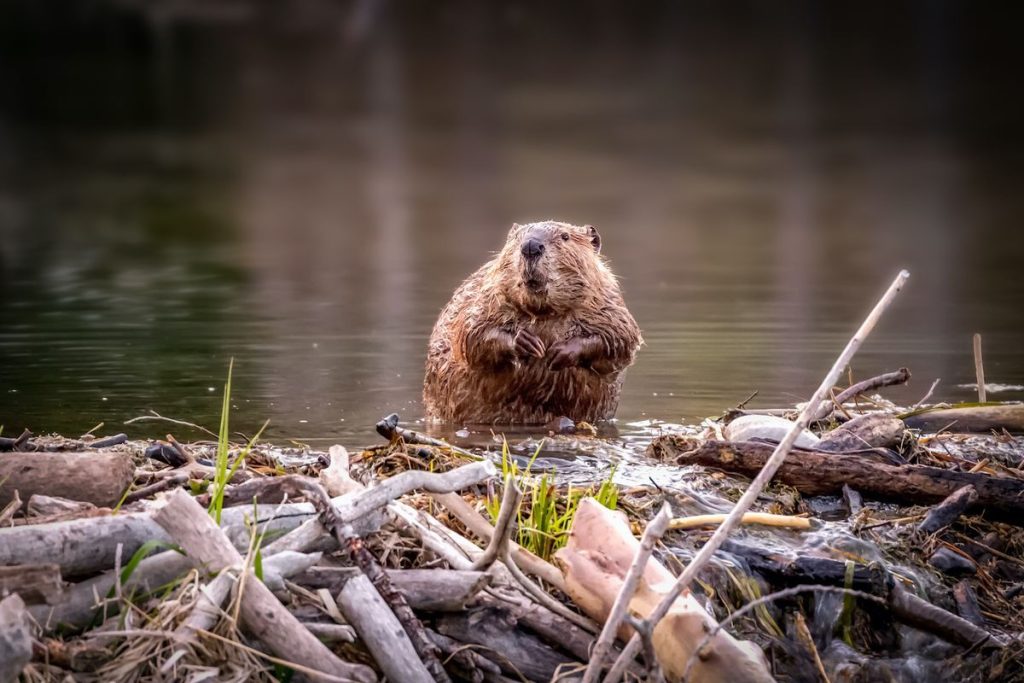Imagine stepping back into the rugged wilderness of North America during the 16th century, where the beaver played a pivotal role not just in the ecosystem but in shaping human history itself. These industrious creatures, known for their impressive dam-building skills, unwittingly became central figures in the lucrative fur trade. Their pelts, sought after for their warmth and softness, fueled the expansion of European settlements and forged new economic pathways. Yet, despite their undeniable impact, there's no specific day in history that shines a spotlight on these fascinating animals. Or is there? While International Beaver Day on April 7 might not ring bells of historical significance, it serves as a modern tribute to these remarkable rodents and their enduring legacy. From the dense forests they helped to sculpt to the economic waves they created, beavers have been indispensable architects of both natural and human worlds.
Key Takeaway
Timeline
Day Activities
-
Crafting Beaver Dams: Dive into the world of beavers by constructing miniature dams. Using sticks, mud, and stones, participants get hands-on experience, mimicking these industrious creatures. It's not just about piling materials; it's about understanding the engineering marvels beavers create in nature.
-
Beaver Habitat Exploration: Embark on a guided nature walk to explore beaver habitats. Keep your eyes peeled for telltale signs of beaver activity, such as chewed tree trunks and lodges. This adventure isn't just a walk in the park; it's a peek into the beavers' architectural world.
-
Conservation Workshops: Engage in workshops focused on the importance of beavers in ecosystems. These sessions cover everything from the role of beaver dams in creating wetlands to strategies for coexisting with beavers in urban areas. It's not just talk; it's about sparking action for conservation.
Why We Love This Day
-
Celebrating nature's engineers: Beavers are nature's skilled builders, creating dams that transform landscapes. On International Beaver Day, we celebrate these furry architects for their incredible ability to reshape rivers and streams, which in turn creates habitats for countless other species. Their work is a reminder of nature's ingenuity and the interconnectedness of ecosystems.
-
Highlighting environmental benefits: Beavers play a crucial role in maintaining healthy water ecosystems. Their dam-building activities can improve water quality, help recharge groundwater supplies, and increase biodiversity. International Beaver Day shines a spotlight on these environmental superheroes, emphasizing the importance of preserving and protecting them for the health of our planet.
-
Raising awareness and appreciation: Despite their contributions to the environment, beavers have faced threats from habitat loss and hunting. International Beaver Day serves as an opportunity to raise awareness about the challenges these animals face and to foster a greater appreciation for their role in the ecosystem. It's a day for communities to come together, learn about beaver conservation, and take steps to ensure these remarkable creatures thrive for generations to come.
Past & Future Dates
| Month | Day | Year |
|---|---|---|
| APRIL | 7 | 2022 |
| APRIL | 7 | 2023 |
| APRIL | 7 | 2024 |
| APRIL | 7 | 2025 |
| APRIL | 7 | 2026 |
| APRIL | 7 | 2027 |
| APRIL | 7 | 2028 |
FAQ
Why is there an International Beaver Day?
International Beaver Day was established by the Beavers, Wetlands & Wildlife organization to highlight the challenges beavers face from habitat loss, aiming to heighten awareness and appreciation for these industrious creatures and their ecological contributions.
What are 5 facts about beavers?
- Beavers are the second-largest rodents in the world after the capybara.
- They possess uniquely powerful teeth that continuously grow, allowing them to gnaw through wood.
- Beavers use a mixture of mud and sticks to construct dams and lodges, creating living spaces and protecting against predators.
- They have a special lining in their cloak that makes it waterproof, alongside webbed feet which make them skilled swimmers.
- Beavers communicate with each other using a complex system of sounds, tail slaps on the water, and scent markings.
How long can a beaver stay underwater?
A beaver can remain submerged for up to 15 minutes. This impressive ability is thanks to their specialized adaptations which allow for efficient oxygen use and carbon dioxide tolerance, along with a heart that supports their aquatic lifestyle.
What is the beaver famous for?
Beavers are celebrated for their extraordinary environmental contributions. Their proficiency at building dams turns them into ecosystem engineers, capable of creating rich habitats for various aquatic species, managing water resources by keeping water tables stable, and mitigating flooding and erosion.
